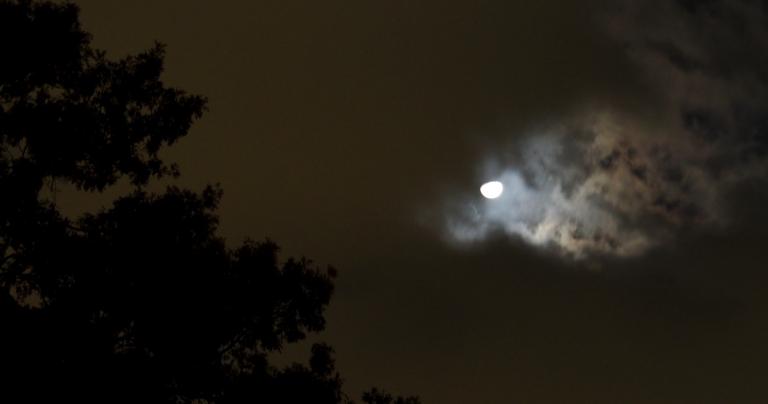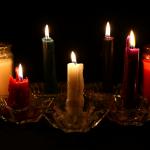What I like most about Pagan conferences and retreats are the informal conversations that take place in restaurants, bars, hotel rooms, and in this case a hallway.
At Sacred Space I was talking with Sandy English of the Silverbranch Priesthood of Hecate about planning transitions in Pagan leadership. During the conversation, she used the words “priesthood over a lifetime.” As soon as she did I grabbed my phone and wrote them down, because an outline was already starting to form in my head.
Different traditions have different ideas about what makes a priest (or priestess) and priesthood. Different is good and we need not argue over definitions. I see a priest as someone who serves their Gods, mediates for their Gods, and serves their community. The conversation Sandy and I had concerned how the emphasis of a priest’s work – particularly their work in and for their community – changes as they move through life.
You will notice that all the section headings end in “-ing.” These are action words. The stages of a priest’s life depend on what they’re doing, not on their age (at least not until the end of life nears) or their time in service. The maiden-mother-crone model is grossly inadequate for this work.
I’m not young by any stretch of the imagination, and I’m in the fourth quarter of my paying career. But my priesthood is still very much in the building phase. Assuming my health holds up I intend to be an active priest long after I start drawing Social Security. So far so good. But in my priestly work I’ve noticed multiple roles and segments that we pass through, and I think it’s worth looking at them in more detail.
Responding
Priesthood begins with a call to serve a God or a community or both. And so the first phase of priesthood is responding to that call.
If you’re a Catholic and you feel the call to the Catholic priesthood, your journey is well-mapped. If you’re a contemporary polytheist, you may have no idea what to do next. We have no seminaries (Cherry Hill is a fine organization, but this isn’t what they do) and only a very few existing priesthoods, dedicated to only a very few deities. Do you join one of them? Do you join ADF and begin their clergy training program? Do you simply take an oath to serve your Gods and your community and try to figure out the rest as you go? That’s what I did – it’s worked out OK for me, but it hasn’t been easy and it hasn’t been particularly fast.
There are many ways to respond to the call to priesthood. Preparing For Pagan Priesthood may help you figure it out.
Training
Once you’ve made your response then the training begins. If you’re in an established program, your course of study is already determined. If you’re not, you’re going to have to figure it out. And that’s where most (though far from all) Pagan and polytheist priests I know found themselves.
Training for priesthood need not be tradition-specific. The Order of Bards, Ovates and Druids has no priests, but what I learned in their correspondence course helped me build the skills I needed to be an effective priest. I learned other skills in Unitarian Universalist workshops and seminars – in particular workshops on providing pastoral care and on leading worship.
Don’t know what training you need? Look around at priests who do the kind of work you’re called to do. What do they do? How can you learn how to do it?
I hope and pray that someday we’ll have formal training programs for polytheist priests in many different traditions. Until then, newly called priests are going to have to continue to find training where and how they can get it.
Practicing
Once you have just a bit of training, it’s time to start practicing. What is it you’re call to do? Do it. Yes, it’s more complicated than that, but at the most basic level it really is that simple.
It takes almost no training to pray and make offerings. Leading ritual is easy to pick up: go to a lot of public rituals, see what works well and what doesn’t. Exemplifying the virtues of your patron deity isn’t always easy, but it requires no special training.
Have some humility and understand your limitations, especially if people start coming to you for pastoral care. Which they will – taking the oath of a priest is like hanging an “open for business” sign in the spiritual world. People in need will find you. Never forget that you’re a priest, not a mental health professional. And if people really do need spiritual guidance but their needs exceed your skills, refer them to someone else. I still do that occasionally.
This is the longest and most important phase of priesthood. At a certain level it ends only with your death, and in some cases not even then.
Deepening
Once you learn the basics and start doing them on a regular basis, it’s time to start going deeper.
See what you can learn from mainstream history, anthropology, and archaeology about how your ancestors understood and worshipped this particular deity – then figure out how you can incorporate that into your practice. Spend time meditating on Their presence and Their virtues. Talk to other priests and devotees and see what they’re doing – reinventing polytheist priesthood is a cooperative effort.
Many times this requires a larger commitment of time and effort. What begins as a High Day practice can become a weekly practice, and then a daily practice. Little mistakes that were no big deal as a beginner are now things that simply must not be done. Obscure devotions that once seemed anachronistic now demand to be done on a regular basis.
This is the biggest step since Responding. This is what separates those who just want to be good Pagans and polytheists from those who are willing to take on the mantle of priesthood.
And it never ends.
Building
Perhaps Catholic priests don’t need to build anything – they can simply continue their centuries-long lineage and tradition. Modern polytheists are still in the early stages of rebuilding and reimagining what was lost with the spread of Christianity.
What should you build? That’s between you and the Gods and the communities you serve. Build traditions, priesthoods, and religious orders. Altars, shrines, and temples. Liturgies, theologies, and philosophies. Communities and families. A hundred other things I’m not thinking of at the moment.
The important thing is to build something that will remain in this world long after you’re gone.
Nurturing
Start building something that’s bigger than yourself and your own mortality becomes evident. Start building something local and the reality of migration becomes evident. All of my public Pagan work has been here in Texas, but before that I lived in Tennessee, Indiana, and Georgia. What would happen to your local polytheist group if job or family concerns forced you to move a thousand miles away?
Perhaps you can find a young apprentice who you can train from the ground up, giving them the structure you had to figure out on your own. Perhaps the Gods send an experienced person to your group who only needs to learn the details of your particular tradition. In any case, don’t just train your successor – nurture them. Your job is not to make them into the same priest you are – your job is to help them become the priest they’re called to be.
This we know: all that lives will someday die. And sometimes “someday” comes sooner than we expect. Nurture your successors.
Preparing
At some point you realize that while the building will go on, your role in it will change. Maybe you have to move away. Maybe you’re no longer physically capable of doing what you’ve always done. Maybe – like me – you’re called to leave one form of leadership and begin another. How are you going to hand the work you’ve been doing to your successor? That requires preparation.
We also need to prepare for our declining years. Where will you live? How will you get around? How will you stay connected to others in your tradition, and in the wider community?
As a movement, Pagans and polytheists need to do a better job of caring for our elders and supporting them in their final years. As individuals, the more we can do to build strong local communities here and now, the more people will be around to help care for us when we need it.
Transitioning
Although I expect my active priesthood to last for many more years, I know there will come a time when I can’t travel to conferences, or lead rituals, or write books, or even blog on a consistent basis.
My vows of priesthood are for the rest of this lifetime – I will never stop being a priest as long as I live. I will continue my daily prayers and weekly devotions as long as I’m physically able – and it doesn’t take much to be able to pray.
How will you transition from being an active priest to semi-active priest? How will you transition from semi-active to retired? How can you retire from a role that over the years has become a huge part of who and what you are?
I’m a long way from being ready to share my thoughts on this, in large part because I sincerely hope I’m a long way from needing to do it. But I know that someday I will.
Overlapping
Many of these categories overlap – you can be doing two or three or maybe even six of them at once. If you’re trying to pigeonhole yourself into only one of them, you’re probably reading this too literally.
The main point is that priesthood is not just one thing. It’s many things, and those many things change at various stages of progression, and various stages of life.
Where ever you are in your priesthood, your journey toward priesthood, or your support of the priests in your life, may your work be an honor to your Gods and a service to your community.



















